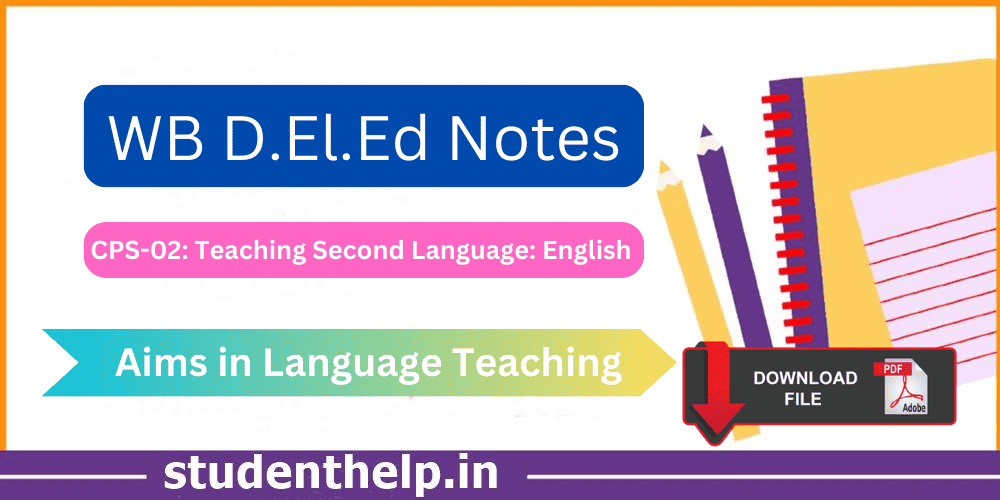The general objective of teaching a second language in India, at present, is to develop an all-round ‘communicative competence’ with a mastery over all the aspects of language use, i.e., listening, speaking, reading and writing. These are called four ‘language skills’.
The two objectives of teaching English according to NCF 2005 are-
1. ‘No teaching, only learning’ approach to be imbibed through the curriculum with the privacy of the children/learner in the whole process.
2. Using language as an instrument for abstract thought and knowledge.
The aims of teaching a language is to enable the learner of a language to become able to use it effectively for all sorts of communication and in all kinds of situations demanding its use.
The aim of teaching English may be broadly classified into three basic categories- (a) Literary aim, (b) Cultural aim and (c) Linguistic aim.
Linguistic aim: The linguistic aim is of chief concern throughout the secondary school level. Through this aim the teacher will help the students to acquire a practical command over the language both in its spoken and written form. The linguistic aim in the schools may be defined as the aim of enabling the students is to
- understand English when it is spoken
- speak English
- understand English when it is written
- writing English
The understanding of English whether spoken or written is easier to the students than the speaking or writing of it. It is for the fact that in the first case only if passive knowledge is needed whereas in the second case an active knowledge of the language is required. So the linguistic aim of teaching English is to develop the following four skills:
- listening
- speaking
- reading and
- writing
Literary aim: the literary aim of teaching English is to give the students a taste for reading English and love forv English literature.
Cultural aim: the cultural aim of teaching English is to enable the students to appreciate and understand the cultural values of the life of the people whose language and literature they are studying. This is not practiced in West Bengal much today. English is mainly taught for its practical use. So the main aim of teaching English in West Bengal is confined in its linguistic value although it is obvious that literally a m cannot be fully denied.
Acquisition is a gradual development of ability in a language by using it naturally in community situations.
Learning is a conscious process of accumulating knowledge by the vocabulary and grammar of a language.
The term acquisition is used for L1 and return learning is associated with l2. The distinction between those two terms may be express as follows.
| Acquisition | informal | subconscious | implicit | Effort less | Picker up |
| Learning | formal | conscious | explicit | Required effort | learnt |








